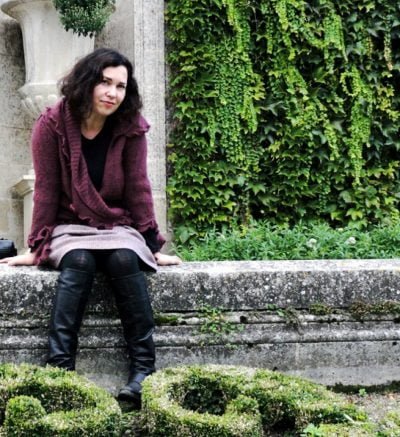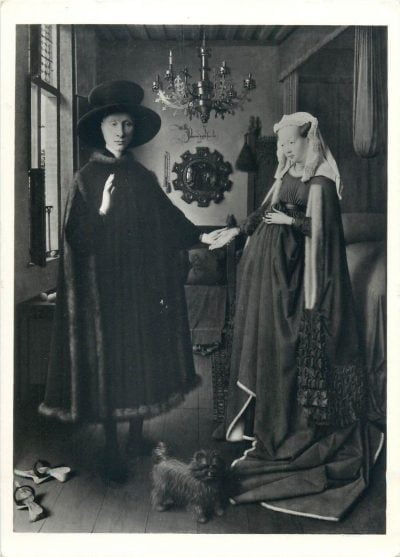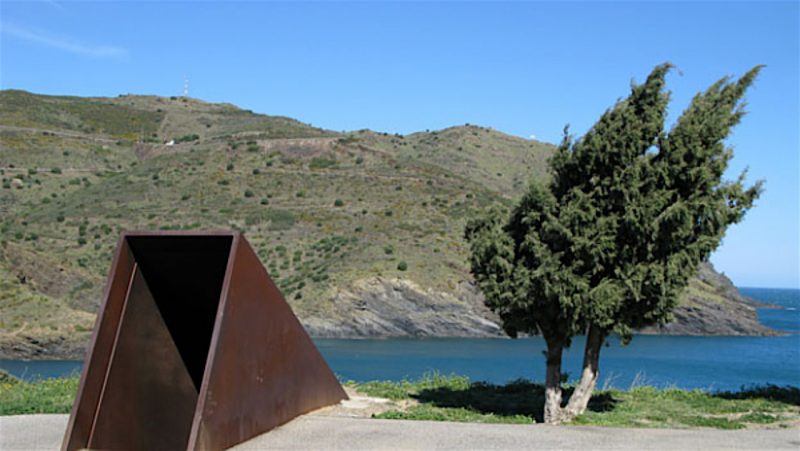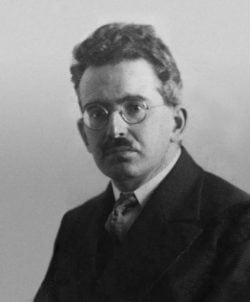#892 The potency of the mundane
The Certainties
by Aislinn Hunter
Toronto: Penguin Random House (Knopf Canada), 2020
$29.95 / 9780735276871
Reviewed by Theo Dombrowski
*
Editor’s note: The West Coast Book Prize Society announced on April 8, 2021, that The Certainties, by
by Aislinn Hunter, has been shortlisted for the Ethel Wilson Fiction Prize in the 2021 BC and Yukon Book Prizes. Winners will be announced on Saturday, September 18th, 2021 — Richard Mackie
*
 In a much quoted poem, English poet W.H. Auden wrote, “About suffering they were never wrong,/ the old masters…how it takes place/ While someone else is eating or opening a window or just walking dully along” (“Musée des Beaux Arts”). Aislinn Hunter has taken this simple truth and from it spun a novel of hauntingly sad reflections woven through the thoughts and experiences of two people almost two generations apart, linked not just by a quiet, stirring moment they share, but also by their parallel understanding of the world.
In a much quoted poem, English poet W.H. Auden wrote, “About suffering they were never wrong,/ the old masters…how it takes place/ While someone else is eating or opening a window or just walking dully along” (“Musée des Beaux Arts”). Aislinn Hunter has taken this simple truth and from it spun a novel of hauntingly sad reflections woven through the thoughts and experiences of two people almost two generations apart, linked not just by a quiet, stirring moment they share, but also by their parallel understanding of the world.
For the world of Certainties is a world where there are very few … certainties. It is a sad world, where life is fragile, where the intelligent, the reflective, or even the ordinary are vulnerable — vulnerable to the vast forces of politics and war, to the vicious cruelties of small-minded officials, to unforeseen accidents, to the extravagant vicissitudes of nature herself. In a novel where there is not a trace of humour, and little hope, the most that can be salvaged is an intelligent and reflective response to the mysterious and strangely consoling nature of the ordinary.

It is, in fact, immersed in the ordinary, carefully and vividly recorded, that the novel begins. An unnamed narrator sees gulls, light on the sea, and a vagrant man “crouching for cigarette stubs.” Only gradually, and expanding non-linearly, the speaker’s story coalesces around his reflections, memories, and observations. He is in Portbou, a seaside village in Spain close to the French border. World War Two has begun. He and two other refugees have struggled over the mountains, hoping to make their way to Portugal and ultimately the U.S.A. With mounting tension we live through the next two, stultifyingly slow days of sinister bureaucracy and smiling brutality.
Simultaneously, we gradually learn of his childhood on a German estate, of his self-imposed exile in Paris as an earnest and inquisitive academic, and, towards the end of the novel, of his harrowing journey through the south of France in his bid for escape from the Nazi threat.

The novel pivots, however, on a nearly unnoticeable moment. Sitting near a fountain, during the oppressively stalled time in Portbou the speaker locks eyes with a five-year-old girl. He hears her name, Pia, spoken by her mother.
And thus is born the second narrative line, almost fifty years later, on an unnamed small, windy island in the Atlantic. Like the first narrative line, this one takes place over a matter of days. Pia, living and working there, finds herself first coping with a wedding gone awry at the onset of a powerful storm and resulting electricity outage. During the next days, she finds herself drawn to the shore where, first, wreckage from a sunken ship washes into the bay, and, later, the bodies of the drowned.

Like the first narrative line in Portbou, this one ripples outwards and backwards, as we learn of her childhood, and, importantly, of the disappearance of her mother, of her upbringing with her grandmother, and, in the end, of her mother’s fate.
The two stories link in different ways. Most superficially they connect simply by alternating a first person narrative (in the present tense), and, for Pia, a third person narrative (again in the present tense). Unsurprisingly, the contrast insinuates itself into the immediacy of each narration.
Much more strikingly the stories link through something more “novelistically” visionary. In her earlier novel, The World Before Us, Aislin Hunter employed something like ghostly voices from the past as a way of intersecting with the present. More sparing here is the similar device whereby both the narrator and Pia have visionary contact with each other.
“Already I can see you on the island you will come to call home,” says the narrator, “as sure as I see my hand on this balcony railing….” He goes further, though, far beyond the facts of her life, to its essence: “You will be that rare and beautiful thing: someone who can give love without being constrained by the need to receive it.” Given his own deepening thoughts on love, it is possible to consider such words as just gentle speculation, but the novelist seems to suggest something more intimate.
For her part, Pia retains a hauntingly vivid memory of the man, his sad face, his blue eyes, and, from her mother, both her intuitive pity for the man and her cryptic words about him: “So don’t forget him. This is all you can do.” Whatever else such a device may do to some readers’ preference for a novel with its feet firmly on the ground, it nevertheless leads to passages which underlie the almost overpoweringly elegiac atmosphere of the whole book, a world interlaced with, in Wordsworth’s words, “thoughts that do often lie too deep for tears.”

And atmosphere is crucial to the novel’s impact. One of its greatest appeals will be to those readers who are drawn to its powerful sense of place and time — to the villages of coastal Europe in part, but, more powerfully to the almost stultifying fear simmering in towns on the margins of the Second World War. Those who have seen the iconic film Casablanca will find themselves re-experiencing a remarkably similar kind of charged drama in the dominant narrative line in Aislinn Hunter’s novel — the liminal town, the confined, internal setting, and, more, the tone, understated, but laced with threat and quiet tragedy.
Though the sense of tragedy in both of the novel’s storylines is similarly restrained, the world Hunter creates is one steeped in violence and death. In the course of the novel, readers experience both immediate and intimate deaths from suicide and from a simple slip on a ladder. On a larger scale, they witness the terrible generosity of a natural world dealing out death to an entire ship full of passengers. To these, the author adds the deliberate cruelties of both Nazis and Fascists in the slaughter of innocent farmfolk in southern France, and, many years later, the systematic torture and execution of political prisoners in an unnamed Latin America country.

Yet all of this death fascinates the author — and is made to fascinate the reader — not primarily because it suggests that the world is terrifying place. Rather, it leads to something like contemplation on the strangeness of the stillpoint between life and death. Here, Auden’s words are pertinent, for part of Hunter’s intent seems to be to make her readers feel the fibrous potency of the mundane, the visceral, the sensory, charged all the more deeply because it has no comprehensible connection with the suddenness and finality of death. The paper thin separation between life and death is even more mysterious when that separation is time itself: Pia recalls walking down a dark hallway in an unnamed Latin American country, drifting from unknowing towards knowing: “turning a corner into an event that had already happened…. It was, then, the difference between one breath and the next: I’m walking down the dim hall (I have a mother), I’m turning into the dank room the man has indicated (I have a mother), I look to where he points along the far side of the wall.”

The strangeness of being human, a thinking human, as both Pia and the unnamed narrator understand, resides in part in contemplating this juxtaposition, the living and the dead, stillness and violence. For Pia, this comes in her decision (even gentle compulsion?) to document meticulously the bodies that have washed ashore from the shipwreck. Almost caressingly, it seems, she links herself to what is, in one sense, only a corpse: “She touches him everywhere — she lifts his arm, rolls him over, and in turning him she feels the heft of him and thinks about how he was once alive and woke up in a bed and rolled his body toward the sun.” For the unnamed narrator, the understanding depends on a whole web of intertwined thoughts, but, most tellingly, on his sense of the connection not just between life and death, but also between “repeating catastrophe” and his own “helplessness.” His words could almost describe Pia’s actions on the shore of the storm-beaten harbour: “I believe that small gestures matter. This is why I go back…to you, Pia. And it is why I have tried to look with such attention at the world — yet, to find something, or someone, to save me; but also to find someone, or something, I can save.”
Such is the nature of Aislinn Hunter’s creative imagination, though, that she enriches her handling of this link between life and death with stirring patterns and images. Early on in the novel we learn that once, long before, the island had a fox farm. All the foxes have long since gone. But not for Pia: she is convinced that she has glimpsed one. Then again, when she is told that this is impossible, she has a second, more penetrating, glimpse. Meanwhile we learn that the narrator, as a boy in Germany, discovered an illicit fox farm on his family’s estate. Pitying the doomed animals, he released them, or tried to. One mother fox seemed paralyzed, unable to separate herself from her own incipient death. Pia’s reflections on the fox she sees many years later startle us into seeing the power of the image: “How did those who survived slip through?” she asks. Later, she realizes the magic of the slender filament between survival and extinction, and her own role as a “witness” of the link, she, Pia, like the fox, “Daughter of the slaughtered.”

Other intersecting image patterns underline the extent to which Hunter has crafted her novel. The narrative flickers with suggestions and details that almost tease our understanding. Amongst the most suggestive of these is the pale lines of scar, on Pia’s arm, on the narrator’s arm, and, finally, on the corpse of one of the drowning victims, “a thin line of white skin.” Mirrors and the mirrored world likewise interconnect moments of understanding. Catching sight of herself in a mirror, Pia remembers the words she once read on the meaning of mirrors — amongst other things, that they are “a semblance of self, a way of knowing.” The image is caught up later through her recollections (apparently) of the mirror in van Eyck’s enigmatic painting, “The Arnolfini Portrait.”
More structurally, the image recurs through the unnamed narrator’s complex and richly nuanced thoughts on different translations of the myth of Narcissus and his reflections in the mythical pool. Through the novel a rich seam of ideas links, amongst other things, to the “rupture” between the ordinary and the extraordinary, his understanding that, as “a child born of violence” (echoes of Pia here), Narcissus and his death can also be the extinction of self.


In such ways, notwithstanding the sensory vividness of not just such image patterns, but also both settings of the novel, the fact is that one of the most remarkable features is the manner in which Aislinn Hunter makes the sensory moment meld, almost seamlessly, into the cerebral. In the Acknowledgements, the author points out that she has loosely based the unnamed narrator on philosopher, thinker, and academic Walter Benjamin. Without making this connection explicit in the novel itself, she quickly establishes that the narrator is an academic. She is probably wise both to underline the academic background of the narrator and not to tie him too closely to the real Walter Benjamin. Thus she is able to spin a fine, contemplative web around the tiny confines of the speaker’s days in Portbou, and around his memories, but to do so without having to replicate the thought processes of the actual historic figure known for the complexity and subtlety of his thoughts and the elusiveness of his expression.
In the process, the author is able not only to make the narrator’s considerations of, for example, Narcissus a “natural” part of his thought flow, but also to ascribe to the narrator many other suggestive ideas. The novel will be particularly appreciated by those who can linger over statements like “the most impressionable things, the truest things occur in solitude” or “kinship is a cousin to fidelity; it is how we attach to others, to those whose countenance we bear, whose history informs us, whose view from the balcony mirrors our own.” Amongst the turnings of his mind, though, as the crisis of the novel builds, especially powerful are his thoughts on the deeper recesses of life, on loneliness, on identity, and, most movingly, on love. The desire he feels for “order and meaning and purpose” — evoking the “Certainties” of the novel’s title — reaches one of its highest moments in his deeply felt realization, “no experience in this world matches being seen by someone who loves you.”
Deeply intelligent, finely wrought, this is a novel that deserves to be widely read. And reread.

*

Born on Vancouver Island, Theo Dombrowski grew up in Port Alberni and studied at the University of Victoria and later in Nova Scotia and London, England. With a doctorate in English literature, he returned to teach at Royal Roads, the University of Victoria, and finally at Lester Pearson College at Metchosin. He also studied painting and drawing at the Banff School of Fine Arts and at UVic. Theo is the author and illustrator of popular guide, travel, and hiking books including Secret Beaches of the Salish Sea (Heritage House, 2012), Seaside Walks of Vancouver Island (Rocky Mountain Books, 2016), Family Walks and Hikes of Vancouver Island — Volume 1: Victoria to Nanaimo, and Volume 2: Nanaimo North to Strathcona Park (RMB, 2018), reviewed by Chris Fink-Jensen in The Ormsby Review no. 384, September 25, 2018. His most recent reviews for Ormsby are of books by Eva Holland, Anosh Irani, Anne Enright, and Esi Edugyan. Theo has also written a Kindle book, When Baby Boomers Retire and you can learn more about him here. Theo lives at Nanoose Bay.
*
The Ormsby Review. More Books. More Reviews. More Often.
Publisher and Editor: Richard Mackie
The Ormsby Review is a journal service for in-depth coverage of B.C. books and authors. The Advisory Board consists of Jean Barman, Robin Fisher, Cole Harris, Wade Davis, Hugh Johnston, Patricia Roy, David Stouck, and Graeme Wynn. Scholarly Patron: SFU Graduate Liberal Studies. Honorary Patron: Yosef Wosk. Provincial Government Patron since September 2018: Creative BC
“Only connect.” – E.M. Forster
2 comments on “#892 The potency of the mundane”